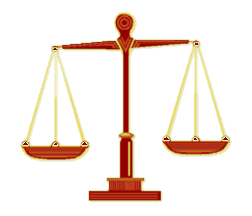Equity (law) facts for kids
In countries that use common law, equity is a special part of the law. It helps make sure that legal decisions are fair and just. Think of it as what feels right and fair, even when the usual laws don't quite cover a situation. Equity steps in when the regular laws are not clear or don't fully solve a problem. For example, a court might use equity to fix a property line mistake or order someone to do something to prevent harm.
Contents
What is Equity in Law?
Equity is about making sure that justice is served in a fair way. It's used when the strict rules of law might lead to an unfair result. Imagine a situation where the written law doesn't have a clear answer. Equity allows judges to look at what is truly fair for everyone involved. It helps to fill in the gaps where the usual laws might be silent or incomplete.
The History of Equity Courts
How Equity Began in England
The idea of common law in England started a long time ago, after the Norman Conquest. Back then, the laws were not perfect and didn't cover every problem. If someone had a problem that the regular courts couldn't solve, they would ask the king for help. They would send a special request, called a petition, directly to the king.
One famous example happened in 1070. Lanfranc, who was the Archbishop of Canterbury, had a legal problem. He asked the king to help him get back lands that had been taken by Odo, Earl of Kent, the king's own brother.
As more and more people asked the king for help, it became clear that the regular courts couldn't handle every legal issue. So, the king created special courts called courts of chancery. These courts were set up to deal with cases based on fairness, or equity.
Changes to Equity Courts
Over many centuries, these equity courts became very important. However, by the 1800s, they started to become less needed. In 1875, the Parliament in England decided to close down the chancery courts completely. Their work was then taken over by the regular courts.
Equity in the United States
When the United States was formed, some states, especially in New England, kept separate courts for law and equity, just like England. But many other states decided to combine these courts. This meant that one court could handle both regular law cases and equity cases.
The U.S. Congress also decided to combine these courts for the federal courts. Today, most U.S. federal courts handle both types of cases. However, United States bankruptcy courts are a special example. They still mostly operate as courts of equity, focusing on fair solutions for people or businesses dealing with debt.
Images for kids
-
The Court of Chancery, London, in the early 19th century
See also
 In Spanish: Equity (derecho) para niños
In Spanish: Equity (derecho) para niños



